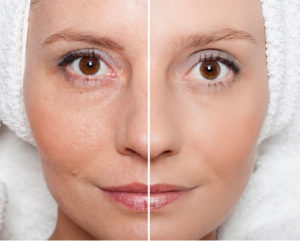 We all know that spending too much time in the sun without skin protection can lead to sunburn, but did you know that sun damage to the skin can lead to premature skin aging? UV ray exposure from the sun is, in fact, the cause of most of the visible skin changes that occur with age.
We all know that spending too much time in the sun without skin protection can lead to sunburn, but did you know that sun damage to the skin can lead to premature skin aging? UV ray exposure from the sun is, in fact, the cause of most of the visible skin changes that occur with age.
Understanding Photo Damage
Photodamage is one of the terms used for the premature aging of the skin due to sun exposure. While sunburn can be considered a short-term effect of sun exposure, photodamage is a long-term effect of the sun’s UV rays.
The signs of photodamage include:
- Wrinkles and fine lines
- Skin laxity
- Rough skin texture
- Pigmentation, including age spots and freckles
- Redness
- Spider veins
Photodamage is different from chronological aging. Chronological aging is normal and challenging to prevent, given that it’s guided by time and genetics. On the other hand, photodamage can be prevented with the diligent application of sunscreen before you’re exposed to the sun.
How Photo Damage Ages the Skin
When UV, or ultraviolet, rays from the sun reach skin that’s not protected by sunscreen, it leads to DNA changes in the cells. The changes caused by photodamage occur in the dermis, which consists of the skin’s deepest layers. Since photodamage takes place deep within the skin, its effects often aren’t visible until many years later.
The dermis is the layer of the skin that contains collagen and elastic and other supportive fibers for the structure of the skin. These fibers are responsible for the skin’s youthful appearance and make the surface of the skin appear smooth. When the fibers are damaged due to UV radiation, photo damage occurs, contributing to premature skin aging.
While photodamage can be frustrating, it can also be addressed with one of our many cosmetic treatment options here at Hermann Wellness. With advanced aesthetic technology, we can help you turn back the clock on skin aging for a rejuvenated look.





 Main Menu
Main Menu